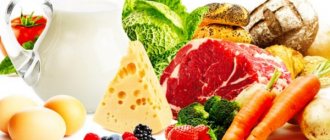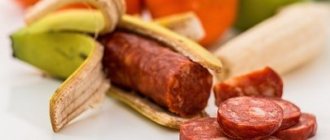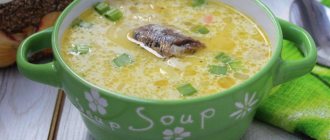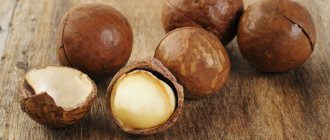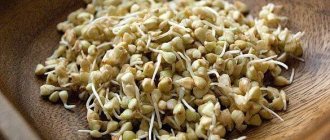Edited by an expert:
Nadezhda Primochkina, nutritionist - 11/26/2020
During the fight against extra pounds, our diet, as a rule, undergoes quite significant changes. We exclude all “unhealthy” foods from our menu, cut down portion sizes, arrange fasting days and count calories, but at the same time we forget that nutrition, first of all, should be balanced. In order to lose weight and not harm your health, it is important to provide the body with the necessary amount of proteins, fats and carbohydrates.
So that the desire for a beautiful and fit figure does not become the reason for the development of serious diseases and pathologies, let's try to figure out how to choose the most healthy menu, and why the nutritional value of foods is so important.
Approximate menu of separate meals for 7 days
1 day
Breakfast: oatmeal (with water, without sugar and oil), kiwi puree.
First snack: pear.
Lunch: steamed fish, green salad.
Second snack: a small portion of nuts.
Dinner: pasta, stewed vegetables.
If necessary, a third snack: any protein product and 1 spoon of vegetable salad.
Day 2
Breakfast: fried egg whites, spinach stewed in vegetable oil.
First snack: berries, low-fat yogurt.
Lunch: mashed potato soup with peas, broccoli and 1 piece of bread.
Second snack: vegetable salad.
Dinner: fish or meat with stewed vegetables.
Day 3
Breakfast: pear, oatmeal.
First snack: a portion of dried apricots.
Lunch: whole grain sandwich with fresh vegetables.
Second snack: fruit smoothie.
Dinner: chicken with stewed vegetables.
4 day
Breakfast: porridge, orange.
First snack: baked apples with cinnamon and honey.
Lunch: fish with salad.
Snack: low-fat cottage cheese.
Dinner: lean beef with stewed vegetables.
5 day
Breakfast: cottage cheese, apple.
First snack: any permitted berries, fruits.
Lunch: vegetable soup and pasta.
Second snack: vegetable salad.
Dinner: boiled shrimp with vegetables.
7 days
Breakfast: pancakes with berries.
First snack: low-fat yogurt, apple.
Lunch: lean meat with stewed vegetables.
Second snack: vegetable salad, a handful of nuts.
Dinner: fish with vegetables.
Combination of sugar and proteins
Rule #7: Eat sugars and proteins at different times!
It is not for nothing that mothers do not allow their children to eat sweets before meals - any sugars, including syrups, sweet fruits, honey, etc., have an inhibitory effect on the secretion of gastric juice and on the mobility of the gastrointestinal tract.
It is known that sugars are not digested in the mouth and stomach; they are absorbed in the intestines. If they are eaten separately, they do not stay in the stomach for a long time, but quickly pass into the intestines. But when they are eaten with other foods, proteins or starches, they linger in the stomach for a long time, waiting for the other food to be digested. Thus, while waiting for the protein and starch to be completely digested, they undergo fermentation.
Advantages of separate power supply
Many diets are based on the refusal of certain foods and restrictions, which often causes disruptions in the functioning of the body, which does not receive the necessary substances in full. For the same reason, it is difficult for dieters to cope with excess weight, since after stress the body stores substances for future use in case of another shortage. Separate consumption is not a diet in the generally accepted sense, it is rather a system of proper nutrition that can be followed all the time. In addition to losing weight, adherents of the system consider the following advantages of separate nutrition:
- Normalization of metabolism. Improper functioning of the digestive organs often causes excess body weight. The establishment of metabolic processes leads to the fact that food does not stay in the body longer than usual, all unnecessary substances leave it in a timely manner, without being deposited as fat.
- Improving the functioning of the cardiovascular system. Since, with separate nutrition, the processes of putrefaction and fermentation in the body completely stop, the decay products, the main cause of atherosclerotic vascular lesions, do not enter the blood. With this approach, almost all cholesterol is removed, and new cholesterol no longer accumulates.
- Varied menu. Almost everything can be used. The main thing is to stick to compatibility. When following the principles of separate nutrition, there is no feeling of hunger, since the goal is not to limit, but to improve digestion and absorption of food. It is noted, however, that the portion should not exceed 300-400 g at a time.
Separate nutrition does not involve eating food at regular intervals
It is important to wait until you feel a slight feeling of hunger, then start eating. For some people, twice is enough.
If the next day you want to eat three times, you don’t need to suppress your hunger. Sooner or later, the body will choose its own regime.
Combination of sugar and starch
Rule #6: Avoid consuming sugar and starches at the same time!
Digestion of starch usually begins in the mouth and continues, under appropriate conditions, for some time in the stomach. Sugars are not digested in the mouth or stomach, but only in the small intestine. When sugars are consumed individually, they quickly move from the stomach to the intestines. When sugars are consumed with other foods, they linger in the stomach for a while, waiting for the other food to be digested. Since they tend to ferment very quickly under the conditions of heat and moisture found in the stomach, this type of feeding almost guarantees acid fermentation.
Jellies, jams, fruit confitures, sugar (white or cane, fruit or milk), honey, black molasses, syrups, etc., added to pies, bread, cookies, cereals, potatoes, cause fermentation. Sweet fruits with starch also lead to fermentation. The same applies to bread containing dates, raisins, and figs.
Separate Power Basics
Since the time of I.P. Pavlov, the theory of an adequate combination of products began to gain great popularity. It was the domestic scientist who first proposed the theory that the digestive system produces separate juices for proteins, fats and carbohydrates. After him, many continued similar research and achieved considerable success.

For the gastrointestinal tract to function normally, it is very important to combine foods correctly
The most significant conclusions for modern dietetics can be considered the conclusions of Herbert M. Shelton.
According to him, the combination of foods with proper nutrition is based on the following principles:
- You cannot combine concentrated protein and the same carbohydrate. Simply put, you should not eat meat, fish, eggs or nuts with baked goods. Due to the peculiarities of their digestion, which are indicated above, a micro-conflict develops, which can lead to flatulence and other gastrointestinal disorders;
- There is no need to eat carbohydrate foods with sour foods. Potatoes and grains do not combine well with lemons and grapefruits. Citrus juice inhibits amylase activity;
- It is not recommended to consume 2 concentrated proteins at the same time. Meat and fish can cause stomach overload at one time. One of the proteins will be digested normally, but the other will pass into the intestines in the form of ballast and the process of rotting will begin. As a result, flatulence or constipation will occur;
- You should not combine fats with proteins. Lipids tend to inhibit the production of gastric juice, which leads to poor protein digestion;
- Fruits should always be eaten 1 hour before the main meal or 3 hours after it. They transit through the stomach and are absorbed in the duodenum in 30-80 minutes. When combined with proteins or fats, they begin to ferment and cause flatulence with diarrhea. That's why you shouldn't combine them with other basic nutrients.
Combination of proteins with proteins
Rule #3: Eat only one concentrated protein meal at a time!
Two proteins of different types and different compositions, requiring different digestive juices, with different concentrations, secreted into the stomach at different times cannot be consumed at the same time. This means that protein combinations such as meat and eggs, meat and nuts, meat and cheese, eggs and milk, eggs and nuts, cheese and nuts, milk and nuts should be excluded.
Milk, if consumed at all, is best taken separately.
Proper nutrition. Fats, proteins, carbohydrates and fiber
All products are conventionally divided into 4 categories according to the content of certain components. They play an important role in human life, so experts recommend maintaining the ratio of fats, proteins, carbohydrates and fiber in food. A healthy diet requires a simultaneous intake of vitamins and minerals along with food.
Proteins are the main source of protein necessary for the normal formation of muscle tissue; fats are involved in the functioning of most systems (digestive, cardiac). Carbohydrates are a source of energy that is divided into 2 categories. Food enriched with fiber helps to lose excess weight and prevents the development of a number of chronic diseases.
Squirrels
Proteins, or proteins, contain the necessary concentration of amino acids involved in digestion. There are 2 types of protein - animal and plant origin, they must enter the body in equal quantities. Plant protein is found in beans, soy, lentils, wheat, chocolate and seaweed, while animal protein is found in meat, eggs and dairy products.
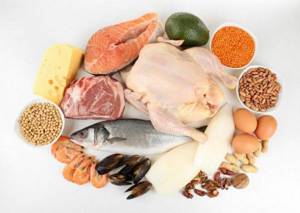
Fats
When losing weight, nutritionists advise focusing on foods containing easily digestible fats. These include certain types of fish (salmon, sardines, tuna), fruits (avocados) and nuts (almonds, walnuts, cashews). The consumption of animal fats should be partially reduced. Regular consumption of products in this category will preserve the elasticity of blood vessels and provide an influx of energy.
Carbohydrates
There are 2 types of carbohydrates - complex and easily soluble. The latter do not bring any benefit and are most often found in fast food and fast food; such food is transformed into fat deposits. Complex carbohydrates are found in cereals, mushrooms, pasta and dairy products. The consumption of products in this category should be regular.
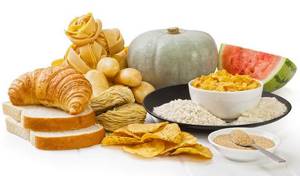
Cellulose
Foods enriched with fiber help maintain normal weight. Unbreakable carbohydrate is found in nuts, grains, vegetables and fruits.
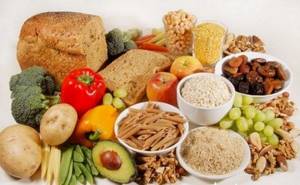
Combination of proteins and fats
Rule #4: Eat protein and fat at different times!
You should not eat cream, butter, vegetable oil and meat, eggs, cheese, nuts and other proteins at the same time. The presence of fat in food reduces the amount of appetite-inducing secretion that is released in the stomach, reduces the amount of chemical secretion, the activity of the gastric glands, reduces the amount of pepsin and hydrochloric acid in the gastric juice, and can almost halve gastric tone. This slowing effect may last for two or more hours. It has been observed that those foods that usually contain internal fat, such as nuts, cheese, and milk, take longer to digest than protein foods that do not contain fat.
You can eliminate the inhibitory effect of fat on protein digestion by eating large amounts of green vegetables with these foods.
Arguments against the food compatibility table
There are people who believe that separate meals and cooking according to the food compatibility table are harmful. They make the following arguments:
- By simultaneous consumption of products from different groups, a more correct absorption of all useful elements occurs.
- Meat without bread or vegetables is less digestible. It is carbohydrates that stimulate the pancreas to produce the necessary substances for protein processing.
- Dairy products with grains are better absorbed. For example, I like oatmeal with milk and a banana in the morning.
- Grain and acidic foods work together to combat the absorption of iron from grains.
- Fish and fiber are irreplaceable together. To remove parasites from the body that can enter with fish.
- In a salad of cucumbers and tomatoes, the enzymes of the former contribute to the destruction of vitamin C, which tomatoes are rich in.
- Dishes prepared not according to the compatibility chart are tastier and therefore you want to eat them. And since the portion is larger, more nutrients are absorbed.
I really like to repeat that only the body itself will help you determine the right type of nutrition.
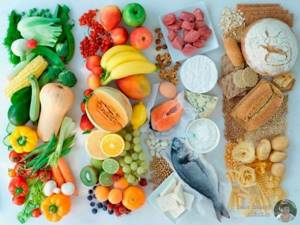
With this separate diet, my sister-in-law lost 9 kilograms. Well, and shaping 3 times a week. That's the whole secret. I hung this sign over the kitchen table and every time I needed to cook, I turned to it. And in order not to overeat, I bought a simple kitchen scale to weigh dishes.
He says it was difficult at first. It took me a week to get used to the new diet. The sign helped her be more disciplined. In 3 months I dropped from 64 kilos to 53. I changed my entire wardrobe to size 42. And she began to look much younger. Here's the story.
To help everyone who wants to lose weight. At the same time, do not torture yourself with a hunger strike, chewing one cucumber per day and washing it down with water. I recommend reading the book “Diet for Gourmets. Nutrition plan from Dr. Kovalkov." This is one of the well-known nutritionists in RuNet. I ordered one myself and am now sorting out the recipes. In fact, they are very simple and easy to prepare. And with our Russian products. I recommend.
By the way, here is a video of him:
Be sure to focus on your well-being. Well, if in doubt, then consult a competent doctor. Get tested and make sure everything goes smoothly and without health consequences.
I say see you soon, dear readers! And good plumbing to you. And subscribe to new articles. I will continue to study the topic of proper nutrition.
Food Combinations Table
| Most common products | The best combinations | Worst combinations |
| Fruits (semi-acidic and non-acidic) | Spoiled milk | Sour fruits, starches (cereals, bread, other starches), proteins, milk |
| Fruits are sour | Other sour fruits, nuts, milk | Sweets, starches (cereals, bread, other starches), proteins (except nuts) |
| Green vegetables | All proteins, all starches | Milk |
| Starches | Green vegetables, animal and vegetable fats | Proteins, fruits, acids, sugars |
| Meat (all types) | Green vegetables | Milk, starches, sweets, other proteins, sour fruits and vegetables, butter and vegetable oils, sour cream, cream |
| Nuts (most types) | Green vegetables | Milk, starches, sweets, other proteins, butter and vegetable oils, cream, sour cream |
| Eggs | Green vegetables | Milk, starches, sweets, other proteins, acidic foods, butter and vegetable oils, cream |
| Cheese | Green vegetables | Starches, sweets, other proteins, sour fruits, cream, butter and vegetable oils |
| Milk | Best consumed separately | Proteins, green vegetables, starches |
| Animal fats (butter, cream, sour cream) and vegetable fats | All grains, green vegetables | Squirrels |
| Melons (all types) | Best consumed separately | All products |
| Cereals (cereals) | Green vegetables | Sour fruits, proteins, sweets, milk |
| Salads, legumes, peas (except green legumes) | Green vegetables | All proteins, all sweets, milk, fruits (all types), butter and vegetable oils, cream |
Nutrition for physically active people
Proper nutrition, which ensures the compatibility of foods, is very important for the health of athletes. The table helps you create a diet that is optimal for sports activities.
The diet is similar to the rules for weight gain, but there are several additional recommendations:
- consumption of clean water should be at least 8 glasses per day - liquid speeds up metabolism;
- before training (2 hours before) you need to take a protein meal;
- meals should be fractional (eat 4-7 times a day);
- adding more complex carbohydrates (cereals and legumes) to your diet is a source of energy.

Sample menu for athletes:
- breakfast: sandwich with butter / oatmeal / omelette of 3-4 proteins;
- second breakfast: stewed cabbage/vegetable salad/fruit salad with nuts;
- lunch: fish or meat with vegetables/stew/rice porridge;
- afternoon snack: cottage cheese/boiled buckwheat/soup;
- dinner: fish or meat/stewed vegetables/salad;
- before bed: 250 ml of kefir.
Below are recipes for high-energy meals for athletes.
Granola
To prepare you need to take:
- oatmeal – 1 cup;
- almonds – 100 g;
- various dried fruits to taste – 10 pcs.;
- yogurt or kefir.
Cooking process:
- Chop dried fruits and mix with cereal and nuts.
- Place in an oven preheated to 180 C for 5 minutes.
- Can be consumed dry after cooling or poured over yogurt.
Shrimp salad with avocado
Ingredients:
- king prawns – 8 pcs.;
- arugula – 150 g;
- avocado – 1 pc.;
- olive oil 2 tbsp. l.;
- lime – 1 pc.;
- salt pepper.
Cooking process:
- Peel and boil the shrimp.
- Peel the avocado and cut it.
- Rinse the arugula, dry and tear.
- Mix all ingredients.
- Season with lime juice and oil, add spices.

Sheldon’s table is an assistant to everyone who wants to switch to proper separate nutrition. By following the advice of a nutritionist about the compatibility of foods, you can quickly improve your body’s condition, lose or gain weight.
Combination of acids with proteins
Rule No. 5. Eat proteins and acids at different times!
Oranges, lemons, tomatoes, pineapples, etc. Similar acids should not be eaten with meat, eggs, cheese, or nuts.
Academician Pavlov proved the adverse effects of acids on digestion. In this case we are talking about both fruit acids and the acids of the final result (formenthalin). These acids delay the secretion of gastric juice necessary for the digestion of protein, resulting in decomposition and rotting of protein foods.
From this point of view, such common combinations as milk and orange juice, pineapple and meat, eggs and orange juice can be considered bad combinations. Lemon juice, vinegar or other acids used as seasonings for salads with protein components seriously interfere with the secretion of hydrochloric acid and the absorption of proteins.
Nuts and fresh cheese are perhaps the only protein foods that decompose quite slowly under such conditions, although their absorption is still delayed.
Product compatibility table for proper nutrition (in pictures)
Academician I.P. spoke about product compatibility. Pavlov. It was he who deduced the basics of the functioning of the gastrointestinal tract in humans, and also studied the features of digestion of incoming food.
According to Academician Pavlov, the following foundations have been formed:
- for each product the stomach secretes a certain type of gastric juice;
- For certain food, its own time is allocated for digestion;
- individual foods are digested in separate areas of the gastrointestinal tract.
Guided by the results of research, Herbert Shelton put forward the theory of separate nutrition. He also created a product compatibility table, which is presented in the following form.
If you consume foods in accordance with the recommendations presented, you can lose weight and improve the functioning of your digestive tract.
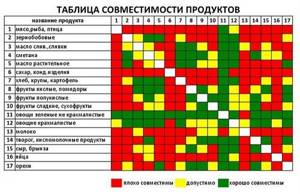
For simplicity, scientists advise creating a menu for every day or even a month - this helps not only improve the health of the body, but also save on purchasing useless products.
Fruits
In the table presented there is a selection of groups with various types of fruits included. For each type there are recommendations for use:
| Sweet fruits | Here you can also highlight dried fruits, which are consumed separately or in combination with cereals. Porridge can be cooked with milk, but adding sugar and butter is not recommended |
| Semi-sweet | This group also includes berries that go well with fermented milk products or legume dishes (protein-fat combination) |
| Sour fruits | Citrus fruits, pomegranates and some types of berries. It is better not to consume them separately, but to mix them with fatty fermented milk products. |
Fruits should not be consumed fresh along with dishes that are difficult for the stomach - meat, starchy foods, flour products, etc.
In addition, fruits are allowed to be consumed 30 minutes or 1 hour before meals, and not after, which is what most people do. Incorrect sequence provokes gas formation.
Vegetables
Here there are also 2 groups - well compatible and less compatible. Well compatible ones are white cabbage, carrots, sweet peppers, beets, onions and others.
It is better to eat these products together, but without adding any fats, dairy products or other inclusions.
Less compatible - pumpkin, zucchini, eggplant should be combined with starch-containing foods or consumed with well-compatible vegetables. Do not add milk or fruit to them.
Even the usual salad with tomatoes and cucumbers turns out to be difficult for the gastrointestinal tract and liver - such a combination is harmful.
Fats
It is wrong to combine different types of fats with each other, which is what most people do. For example, a piece of meat fried in vegetable oil is quite harmful to the human body as a whole.
It is also noted that nuts contain a lot of fats and oils, which is why they become an individual product.
As an exception, you can combine them with herbs or green vegetables - you can add them to salads with lemon juice as a dressing.
Sahara
Proper nutrition allows for the consumption of sweets - jam, honey, syrup, fructose. They can be consumed between meals
It is important not to eat bread. You can't eat sweets after your main meal
The right combination of foods: proteins, fats, carbohydrates
Page 1 of 2Next ⇒Fruits in separate meals
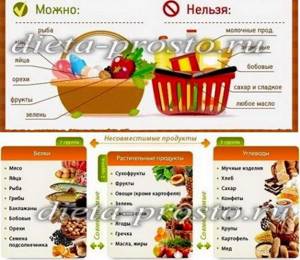
The compatibility of fruits varies, for example, you should not eat sweet and sour fruits at the same time, or dates and pineapples, bananas and oranges at the same time.
Dr. Walter proved through life experience that even vegetarianism has mistakes. When he wanted to restore his health, he tried to induce a beastly appetite in himself, thereby irritating his stomach. He replaced drinking with fruit juices, which led to neurosis, although at first he thought it was just a feeling of hunger and nothing more.
Then he tried to quench it all with plenty of food, but the result was unsuccessful. Because it is simply impossible to get rid of neurosis by eating food. Based on this, the doctor refused to eat a vegetarian diet. But he did this not because vegetarianism can be harmful to health, but because he changed his diet, namely, he stopped drinking fruit juices. But here he proceeded from the fact that the incorrect use of such drinks interferes with health. Separate meals, menu product compatibility table, can only be with the correct, developed combination of products, and not otherwise. Properly designed combination of fruits:
- grapefruit and orange; - dates with bananas; - melon, persimmon; - cherries and apricots; - plum, cherry; - figs with apples. And many different fruits can be fully combined in the diet; the only criterion here is that it is better not to add sugar to them. A salad with proteins may include, for example, cottage cheese with nuts and avocado.
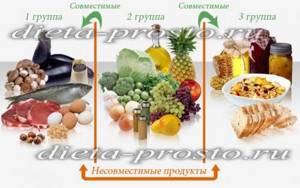
To date, separate food compatibility table reviews have only a positive direction. Like many nutritional concepts, it is proven that a difference will only be felt as a result of proper nutrition. Nutritionists believe that separate nutrition is proper nutrition, which has been tested and developed for a long time. And it is based on both experience and results.
There are many essentially similar views, and they are all based on different methods. But the similarity is that no recommendations were given, they will be divided into 3 main groups: - products that contain protein; - foods containing carbohydrates; - a neutral group that includes greens, fruits and animal fats.
But it is important that the main part of your diet is fruits and vegetables. Separate nutrition, food compatibility chart, proteins, fats, carbohydrates must have their own environment for proper digestion, only then will there be complete harmony in the combination of products, for example: - you cannot eat proteins and carbohydrates or sugars and carbohydrates at the same time; - You cannot eat fats and proteins at the same time. In order to better understand the products, you can divide them into groups: - sour fruits - lemon, orange, pomegranate and others; - sweet - grapes, persimmons, raisins and others; - semi-sour - cherries, blueberries, apricots and others; - rich in starch - potatoes, semolina, muesli; - sugar - honey, jam, jam; - rich in protein - meat, fish, cottage cheese; - rich in fats - lard, butter, fatty meat, fatty fish and so on.
The most common erroneous product combinations:
- bread and meat in any form from sausage to schnitzel;
- bread and egg;
- potatoes with egg;
- porridge and egg;
- pasta and meat seasoned with sauce;
- macaroni and cheese;
- dumplings and ravioli.
The consumption of such dishes is often accompanied by some kind of salad dressed with mayonnaise, olive oil or vinegar. Moreover, they contain a large amount of salt and seasonings. If you add alcoholic drinks to this, then indigestion is guaranteed. This is not at all the diet that separate meals for weight loss are talking about (table).
In combination with protein products, the following vegetables are preferred:
- spinach;
- Brussels sprouts, white cabbage and Chinese cabbage;
- beet tops, mustard, turnip;
- broccoli;
- asparagus;
- fresh green beans;
- zucchini and pumpkin;
- onions, parsley and celery;
- cucumbers;
- radishes;
- salad and other non-starchy foods.
A bad combination with protein will be if you use vegetables:
- beets and turnips;
- carrot;
- cauliflower;
- kohlrabi and rutabaga;
- peas;
- potato.
These foods are somewhat starchy and are best used with other starches or neutral foods rather than proteins.
Hebert Shelton Table
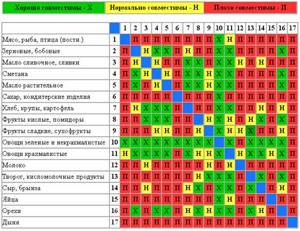
- line No. 8 - sour fruits and tomatoes (the latter in this line due to the content of citric, oxalic and malic acids) - the expanded list also includes tangerines, pineapples, cranberries, pomegranates, lemons, sour apples and pears and others;
- semi-sour fruits are mangoes, raspberries, strawberries, sweet apples and pears, peaches and others;
- line No. 9 - sweet fruits - bananas, persimmons, dates, figs, all dried fruits, dried melon, raisins, prunes;
- line No. 10 - green and non-starchy vegetables - these are white cabbage, cucumbers, eggplants, bell peppers, green peas, lettuce, asparagus, young zucchini, young pumpkin, green and onions, garlic, parsley, dill, celery, tops radishes, beets. Radishes, rutabagas, radishes and turnips are “semi-starchy” vegetables.
- line No. 11 - starchy vegetables - beets, horseradish, pumpkin, carrots, zucchini, cauliflower.
There should be an interval of 4-5 hours between meals of different types of food, and you cannot eat proteins and carbohydrates at the same time, because their digestion requires different conditions: an acidic environment for proteins and an alkaline environment for carbohydrates.
1. You can drink water no later than 10 minutes before eating, but after eating no earlier than: 30 minutes if you ate fruit; after 2 hours if you ate food containing starch; after 4 hours if you ate protein foods. 2. Rest before and after meals is required. 3. Chew your food well. 4. Don’t overeat, eat 1 serving of 200-250 grams, not 3-4 at a time. 5. 50% of the daily diet should be raw plant foods. 6. Eat fruits and berries. It is better to eat them as a separate meal, or half an hour before the main meal, but do not eat fruits and berries after meals.
The basic principles of the Shelton diet are eating simple food that is not burdened with various sauces and mayonnaise. In a month of eating this way, you can lose about 7-9 kg of excess weight without resorting to diets or fasting. The main thing is not to combine proteins with carbohydrates. To process the former, an acidic environment is needed, and to assimilate the latter, an alkaline environment is needed. If we throw everything into the stomach, an imbalance will arise: acidic and alkaline enzymes will begin to suppress each other, slowing down metabolism. As a result, part of the food will be deposited in fat, and the remains will rot and ferment in the body, clogging it with waste and toxins.
Squirrels
Those who want to lose weight should cook meat, poultry and fish boiled, grilled, grilled or in the oven. During processing, you need to free them from fat and skin. Meat dishes are best served with non-starchy vegetables or herbs. This duet will help the body absorb them faster and remove excess cholesterol. It is strictly forbidden to drink proteins with alcohol, the use of which contradicts all principles of separate nutrition. Proteins in this combination are not digestible at all, and the pepsin they contain clogs the liver and blood vessels.
Pulses
These include peas, soybeans, beans, etc. Combining them with other products has a dual character. As starches, they are perfect for easily digestible fats, such as vegetable oil, butter, and sour cream. In the form of vegetable proteins, they go well with herbs and vegetables.
Butter and cream are classified as fats . They, like meat products, are difficult for our digestive system, so it is advisable to soften their effect on it with starchy foods.
Vegetable oil in itself is very useful, but not refined. It goes well with nuts that contain vegetable fat.
Sugar and confectionery products slow down the secretion of gastric juice and are absorbed immediately in the intestines, which in itself is not bad. But if you eat sweets with other food, then it lingers in the stomach, causing a fermentation process and as a result such unpleasant phenomena as heartburn, constipation, and gastritis appear. Therefore, it is advisable to eat sweets separately from other foods, see table.
Flour products and potatoes
These products are the least useful from the point of view of separate nutrition. The carbohydrates obtained from the processing of these ingredients contain large amounts of starch, which itself is very difficult to process. And if you add proteins to it, a lump of rot will form in the stomach, which will poison the liver and clog the blood vessels. Our favorite factory bread is considered a separate dish. You can eat it with butter or onions, but under no circumstances make sandwiches with sausage or cheese. The only exception is wholemeal bread. It is allowed to be consumed with various salads from any vegetables and fruits.
Fruits
Based on the basic principles of the separate nutrition diet, the table of which is posted above, all fruits are divided into sour, semi-acidic and sweet. The sour category includes citrus fruits, pineapples, pomegranates, cranberries, as well as early apples, plums, apricots and grapes. Tomatoes can also be included in this category, since they contain three types of acids: oxalic, citric and malic.
Semi-sour are sweet apples, pears, peaches, grapes, plums and almost all berries. The list of sweet fruits includes ripe watermelons and melons.
The table of separate meals for weight loss even indicates how much time should pass after eating a particular type of fruit. For example, sour and sweet do not go well with anything. You need to eat them half an hour before taking any type of food. But semi-sour ones go well with dairy, fermented milk and leguminous products.
sour fruits and tomatoes , as well as their juices, thirty minutes before the main meal. In the food compatibility table you can clearly see that the compatibility of protein and starchy foods with sour fruits is almost all marked in red. The combination is not valid, see table.
Sweet fruits and dried fruits are healthy, there is no doubt about it. After all, they are a source of natural sugar (as opposed to artificial sugar). They can be combined with nuts and milk, but not often and not much, since it is still hard on the digestive system. In general, the general rule for all fruits is that they are best taken about twenty minutes before meals. This is due to the fact that they are absorbed in the intestines. And if you eat them together with other food products or after them, then, as in all cases of consuming incompatible products, fermentation processes will be observed in the stomach and the vitamins that fruits are so rich in will simply not fulfill their purpose, see table.
Vegetables
All vegetables are divided into starchy and non-starchy. The first category includes root vegetables. These are carrots, zucchini, parsley root, pumpkin, etc. When combined with sugar, they provoke terrible flatulence. The remaining combinations are more or less acceptable.
Non-starchy vegetables represent the tops of all edible plants. These are onions, garlic, sweet peppers, radishes, peas, etc. They will be appropriate on the table for any meal and will only bring you benefits.
, green and non-starchy vegetables are incompatible with milk. Otherwise, the green light is on for them.
When starchy vegetables are combined with sugar, fermentation processes occur. And the best combination for this line would be green and non-starchy vegetables.
Milk
Milk is a separate food and cannot be combined with any products. If you wash down your main meal with milk, it will not be able to be digested, since milk tends to envelop foods, protecting them from the effects of an acidic environment.
Separate meals. Menu
Using the separate meals table, you can easily create a suitable menu for yourself from your favorite foods, for example:
-1-
For the first breakfast, fruit, several types, but no more than 3. For the 2nd breakfast, a vegetable salad without tomatoes and 1 boiled green vegetable, a product containing starch, for example, potatoes. For Lunch and Dinner, a salad dish, a protein product and one starchy vegetable for each meal.
-2-
For the 1st breakfast, fruit or dried fruit. For the 2nd breakfast, either a vegetable salad, a vegetable salad with 100 g of cottage cheese, or sour fruit with nuts. For Lunch and Dinner, a vegetable or fruit salad.
Similar articles:
- Separate meals for 90 days. In 3 months minus 20 kg
- Carbohydrate diet. Rules.Table. Menu
- Atkins diet. Diet menu. Table
- Borodina's diet. Basics. Recommendations. Principles
- Low-carbohydrate diet. Menu. Table
ADVIСE:
With excessive dietary restriction, the body does not receive the necessary nutrients. Be sure to include vegetables and fruits, cereals, low-fat meat and dairy products, and vegetable oils in your diet. It is recommended to eat 4-5 times a day. In the morning on an empty stomach you can drink a glass of water. Porridge is usually prepared for breakfast: buckwheat, oatmeal, rice, corn, barley. You definitely need to have breakfast. It is better to eat less, but more often and slowly. You don’t need to cook a lot - just for one time and exactly one serving for each family member. Under no circumstances should you overeat. Use less salt and various spices.
Product compatibility table for separate meals : It is very harmful to drink mineral water with lemon juice for breakfast. They aggravate the feeling of hunger.
For lunch, it is best not to eat legumes, corn, or wheat porridge, as this will lead to a feeling of heaviness and bloating. The body processes carbohydrates worse in the evening, which promotes fat deposition. A diet with separate meals is difficult to maintain.
There are foods that cannot be combined . Eggs containing iron and calcium are poorly digestible due to the minerals that potatoes contain. Cabbage in combination with fish interferes with the absorption of iodine. Incompatible products are meat and milk. Drinking juice or eating yogurt for breakfast is very harmful. Kefir and yogurt should be drunk in the afternoon or at night, not in the morning. Meat and eggs should not be eaten with tomatoes, oranges, or pineapple. It is also not recommended to combine cheese and tomatoes. Neutralize and eat dried bread, not fresh; the yeast in it loses its activity and becomes harmless.
Fruits in separate meals
The compatibility of fruits varies, for example, you should not eat sweet and sour fruits at the same time, or dates and pineapples, bananas and oranges at the same time.
Dr. Walter proved through life experience that even vegetarianism has mistakes. When he wanted to restore his health, he tried to induce a beastly appetite in himself, thereby irritating his stomach. He replaced drinking with fruit juices, which led to neurosis, although at first he thought it was just a feeling of hunger and nothing more.
Then he tried to quench it all with plenty of food, but the result was unsuccessful. Because it is simply impossible to get rid of neurosis by eating food. Based on this, the doctor refused to eat a vegetarian diet. But he did this not because vegetarianism can be harmful to health, but because he changed his diet, namely, he stopped drinking fruit juices. But here he proceeded from the fact that the incorrect use of such drinks interferes with health. Separate meals, menu product compatibility table, can only be with the correct, developed combination of products, and not otherwise. Properly designed combination of fruits:
- grapefruit and orange; - dates with bananas; - melon, persimmon; - cherries and apricots; - plum, cherry; - figs with apples. And many different fruits can be fully combined in the diet; the only criterion here is that it is better not to add sugar to them. A salad with proteins may include, for example, cottage cheese with nuts and avocado.
To date, separate food compatibility table reviews have only a positive direction. Like many nutritional concepts, it is proven that a difference will only be felt as a result of proper nutrition. Nutritionists believe that separate nutrition is proper nutrition, which has been tested and developed for a long time. And it is based on both experience and results.
There are many essentially similar views, and they are all based on different methods. But the similarity is that no recommendations were given, they will be divided into 3 main groups: - products that contain protein; - foods containing carbohydrates; - a neutral group that includes greens, fruits and animal fats.
But it is important that the main part of your diet is fruits and vegetables. Separate nutrition, food compatibility chart, proteins, fats, carbohydrates must have their own environment for proper digestion, only then will there be complete harmony in the combination of products, for example: - you cannot eat proteins and carbohydrates or sugars and carbohydrates at the same time; - You cannot eat fats and proteins at the same time. In order to better understand the products, you can divide them into groups: - sour fruits - lemon, orange, pomegranate and others; - sweet - grapes, persimmons, raisins and others; - semi-sour - cherries, blueberries, apricots and others; - rich in starch - potatoes, semolina, muesli; - sugar - honey, jam, jam; - rich in protein - meat, fish, cottage cheese; - rich in fats - lard, butter, fatty meat, fatty fish and so on.
The most common erroneous product combinations:
- bread and meat in any form from sausage to schnitzel;
- bread and egg;
- potatoes with egg;
- porridge and egg;
- pasta and meat seasoned with sauce;
- macaroni and cheese;
- dumplings and ravioli.
The consumption of such dishes is often accompanied by some kind of salad dressed with mayonnaise, olive oil or vinegar. Moreover, they contain a large amount of salt and seasonings. If you add alcoholic drinks to this, then indigestion is guaranteed. This is not at all the diet that separate meals for weight loss are talking about (table).
In combination with protein products, the following vegetables are preferred:
- spinach;
- Brussels sprouts, white cabbage and Chinese cabbage;
- beet tops, mustard, turnip;
- broccoli;
- asparagus;
- fresh green beans;
- zucchini and pumpkin;
- onions, parsley and celery;
- cucumbers;
- radishes;
- salad and other non-starchy foods.
A bad combination with protein will be if you use vegetables:
- beets and turnips;
- carrot;
- cauliflower;
- kohlrabi and rutabaga;
- peas;
- potato.
These foods are somewhat starchy and are best used with other starches or neutral foods rather than proteins.
Hebert Shelton Table
- line No. 8 - sour fruits and tomatoes (the latter in this line due to the content of citric, oxalic and malic acids) - the expanded list also includes tangerines, pineapples, cranberries, pomegranates, lemons, sour apples and pears and others;
- semi-sour fruits are mangoes, raspberries, strawberries, sweet apples and pears, peaches and others;
- line No. 9 - sweet fruits - bananas, persimmons, dates, figs, all dried fruits, dried melon, raisins, prunes;
- line No. 10 - green and non-starchy vegetables - these are white cabbage, cucumbers, eggplants, bell peppers, green peas, lettuce, asparagus, young zucchini, young pumpkin, green and onions, garlic, parsley, dill, celery, tops radishes, beets. Radishes, rutabagas, radishes and turnips are “semi-starchy” vegetables.
- line No. 11 - starchy vegetables - beets, horseradish, pumpkin, carrots, zucchini, cauliflower.
There should be an interval of 4-5 hours between meals of different types of food, and you cannot eat proteins and carbohydrates at the same time, because their digestion requires different conditions: an acidic environment for proteins and an alkaline environment for carbohydrates.
1. You can drink water no later than 10 minutes before eating, but after eating no earlier than: 30 minutes if you ate fruit; after 2 hours if you ate food containing starch; after 4 hours if you ate protein foods. 2. Rest before and after meals is required. 3. Chew your food well. 4. Don’t overeat, eat 1 serving of 200-250 grams, not 3-4 at a time. 5. 50% of the daily diet should be raw plant foods. 6. Eat fruits and berries. It is better to eat them as a separate meal, or half an hour before the main meal, but do not eat fruits and berries after meals.
The basic principles of the Shelton diet are eating simple food that is not burdened with various sauces and mayonnaise. In a month of eating this way, you can lose about 7-9 kg of excess weight without resorting to diets or fasting. The main thing is not to combine proteins with carbohydrates. To process the former, an acidic environment is needed, and to assimilate the latter, an alkaline environment is needed. If we throw everything into the stomach, an imbalance will arise: acidic and alkaline enzymes will begin to suppress each other, slowing down metabolism. As a result, part of the food will be deposited in fat, and the remains will rot and ferment in the body, clogging it with waste and toxins.
The right combination of foods: proteins, fats, carbohydrates
So you can alternate protein and carbohydrate days, you can alternate two days. On protein days you can eat meat, fish, poultry, including lean ones, cottage cheese, milk, meat broths and non-starchy vegetables, fish soup. During carbohydrate days, eat fruits, salads, berries, fruit drinks and juices, vegetable soups, cereals, without milk. Do not forget about water balance - 1.5 - 2 liters per day is a mandatory requirement of water. But fatty foods - mayonnaise, chocolate, fatty dairy products - are prohibited.
1Next ⇒
Didn't find what you were looking for? Use Google search on the site:
Separate nutrition: where to start and how to lose weight
Now let's talk about how to switch to separate meals for weight loss. What recommendations from nutritionists should you consider when switching to a new diet:
- It is necessary to change eating habits gradually. Any changes in diet will require changes in enzyme production. Therefore, it is necessary to give the body time to adapt and synthesize new digestive substances. It’s worth starting with separate meals once a week. After a month - eat separately 2 times a week. After another month - 3 times a week. And so gradually bring your body to a daily separate menu.
The centuries-old experience of generations of eating proteins and carbohydrates together has adapted the gastric tract to precisely this type of food intake. It takes time to switch to another method:
- It is necessary that the new diet brings you joy. A prolonged absence of positive emotions reduces the production of serotonin, the hormone of joy. Which leads to depression and requires treatment by a neurologist.
- Listen to your feelings. There are individual intolerances to foods. Some healthy foods may not be right for you.
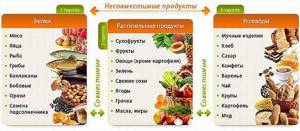
What can be said unequivocally: in the 80 years that have passed since the publication of Shelton’s book, many new studies have appeared. Some postulates and principles of separate acceptance need clarification. Most likely, for health improvement and weight loss, it is not the separation of proteins and carbohydrates that is important, but the correct diet, taking into account compatible and incompatible foods, and physical activity. And also from refined and synthetic food substances.
Combination of products for health and weight loss
According to Shelton's theory, combinations of the following types of products are unacceptable:
- Proteins and carbohydrates cannot be combined
- Proteins and sour fruits cannot be combined,
- Two different “strong” proteins with a large amount of protein component cannot be combined. They will not be absorbed due to the heterogeneity of protein structures and their different breakdown. For example, you can’t fish with poultry or meat,
- You can’t combine carbohydrates with acids (sour vegetables and fruits),
- You can’t eat different starches together
- You can't have starch and sugar in one meal,
- You cannot mix milk, watermelons, melons,
- Proteins and fats cannot be combined. Particularly unhealthy, from this point of view, is pork meat with streaks of fat - it is a rather difficult to digest food that promotes weight gain.
Be sure to read: How to effectively lose weight in a month without harming your health?
